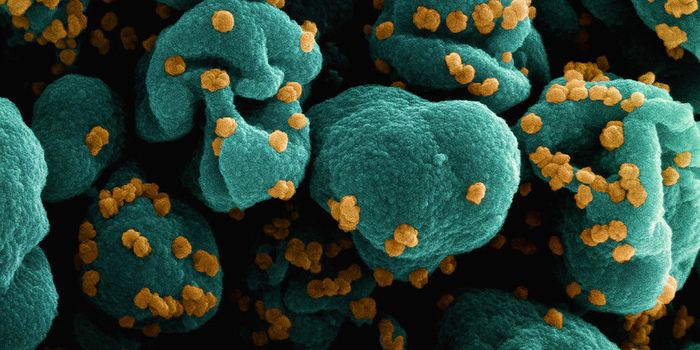Salmonella Becomes More Deadly and Drug-Resistant in Central Africa
Reporting in Nature Communications, an international team of scientists has identified strains of extensively drug-resistant (XDR) Salmonella typhimurium in the Democratic Republic of Congo (DRC). The bacterial pathogen causes millions of bloodstream infections in sub-Saharan Africa every year (described in the video), and these newly-found strains can evade the effects of all drugs that are easily available in the DRC, except one. Drug-resistance has only increased in strains of S. typhimurium as time has gone on, and it seems likely that it will continue to do so.
"We isolated the Salmonella typhimurium from patients in hospitals across the Democratic Republic of Congo during our bloodstream infection surveillance activities. It is now crucial that we closely monitor the bacteria and their progression," said Professor Octavie Lunguya of the Institut National de Recherche Biomédicale in the DRC. Tracking and controlling the spread of XDR Salmonella is becoming increasingly important to public health.
According to the Centers for Disease Control and Prevention, Salmonella infections result in about 1.2 million cases of illness, with 23,000 requiring hospitalization, and 450 causing death in the United States every year; about one million of these cases are from food poisoning. Backyard poultry, for example, caused an outbreak of infection earlier this year (described in the video below).
However, in sub-Saharan Africa, the S. typhimurium bacterium can infect the blood, called invasive non-typhoidal Salmonella (iNTS) infections. These illnesses impact around 3.4 million people every year, and killed 681,316 people in 2010, according to a 2015 report. One type of S. typhimurium called ST313 has been associated with antibiotic resistance, and two lineages have descended from it. Lineage II is now the main cause of iNTS infections, which are challenging to treat in the DRC and particularly dangerous to children with weak immune systems.
Scientists are now learning more about how ST313 has and continues to evolve to evade drugs. The resistance that researchers have observed in S. typhimurium samples from patient blood is unprecedented, and some resist even last-resort drugs like azithromycin.
Bacteria can easily share genes that are contained on small pieces of genetic material called plasmids. Resistance genes are often spread this way in a mechanism called horizontal gene transfer. In this study, the researchers were surprised to identify a plasmid that was packed full of genes that enable the microbes to evade drugs.
"All antibiotic resistance genes contributing to 'XDR' are present on the same plasmid. This is worrying because a plasmid is a mobile genetic element that could be transferred to other bacteria. While accumulating more antibiotic resistance, we discovered that the novel Salmonella typhimurium line is also showing further genetic and behavioral changes which suggest ongoing evolution of the bacteria towards bloodstream infections," said study first author Dr. Sandra Van Puyvelde of the Institute of Tropical Medicine and Visiting Scientist at the Wellcome Sanger Institute.
This type of Salmonella is becoming more aggressive. No longer content to infect the gut, it's now causing far more serious infections in the blood. The scientists applied computational tools to look at the genetic sources of these behavioral shifts.
"In the lab we've observed changes in this new group of Salmonella typhimurium that we've seen in other invasive salmonella. What's interesting as a bioinformatician is that we've been able to pick up these changes using machine learning. The hope is that in the near future we'll be able to deploy machine learning in a more predictive role to help control the emergence and spread of drug-resistant strains of bacteria such as S. typhimurium," said Dr. Nicole Wheeler, a bioinformatician at the Centre for Genomic Pathogen Surveillance at the Wellcome Sanger Institute.
Sources: AAAS/Eurekalert! Via Wellcome Trust Sanger Institute, Nature Communications








